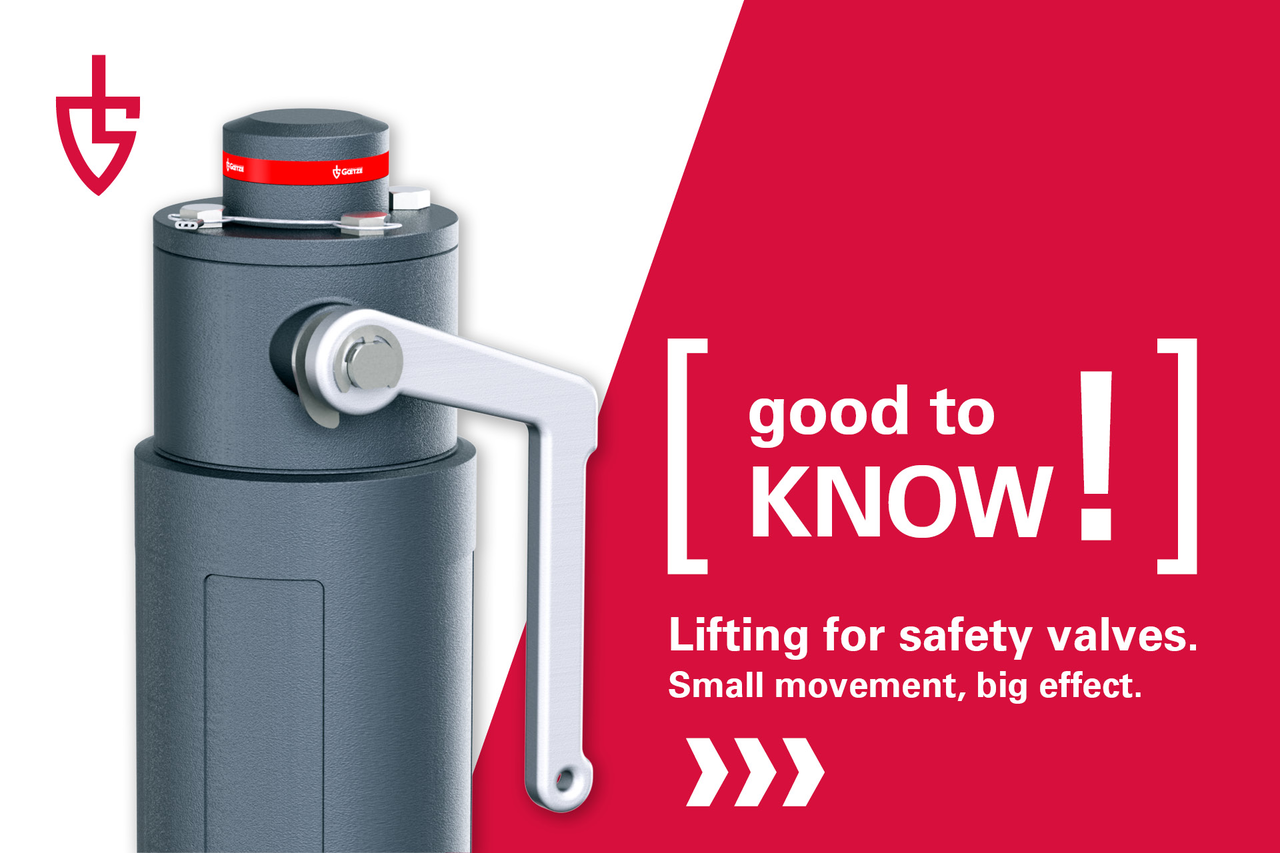News 09/05/2025Good to know: Lifting safety valves – small movement, big effect
Lifting on safety valves is an essential feature that ensures the functionality and longevity of the valves. But what exactly does ‘lifting’ mean and when is it necessary?

What does lifting mean?
During lifting, the valve disc is lifted off the valve seat in a form-fitting manner against the spring force. This must be possible at the latest when the pressure reaches ≥85% of the response pressure. Regular lifting checks the function of the valve and removes any deposits.
A safety valve should be vented to prevent the valve disc from sticking or seizing. This contributes to ensuring that the valve opens properly in an emergency and safely discharges the excess pressure.
What types of lifting are there?
There are different types of air release depending on the application and medium:
Rotary lifting (K)
The spindle is raised by turning a knurled nut on the bonnet. This creates a gap between the seat and the disc, allowing the medium to flow. This design is often used for threaded valves up to 2’ for air and water applications.
- Advantages: Simple and compact design, valve disc remains in vented position.
Lever ventilation (L)
Pulling a lever lifts the spindle and cone off the seat.
- Advantages: Simple design, valve disc remains in the vented position if desired.
- Typical application: Flange safety valves for steam applications.
Without lifting (O)
In certain applications, for example with flammable, toxic or environmentally hazardous media, manual lifting is not possible or not permitted. In this case, lifting is not performed.
Pneumatic lifting device (P)
With the pneumatic lifting device, the valve disc is lifted off the sealing seat by pressure control.
- Advantages: Ideal for automated systems, valves can be checked from the control station, suitable for CIP and SIP processes in the food and pharmaceutical industries.
When should safety valves be vented?
There is no general rule for how often a safety valve must be vented. This depends on the respective application, the medium and the operating specifications. The operator must carry out regular inspections and maintenance in accordance with their inspection and maintenance schedule.
The right lifting for your application
Not every lifting action is suitable for every application. Factors such as medium, temperature and industry standards play a decisive role. The technical data sheets for GOETZE safety valves specify the respective lifting action.
Do you have questions about the correct lifting for your application?